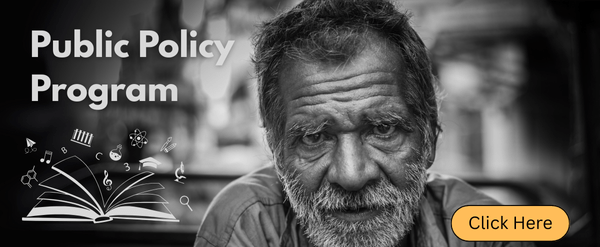By Harini Vallal J
The Democratic People’s Republic of Korea (DPRK) or North Korea has been an authoritarian state for 70 years, led by the Kim family.[1] It is ruled by one of the world’s longest-standing dynastic dictatorships.[2] Human rights are severely restricted in the country.[3] There is no free expression, religion, or movement. The country uses the Songbun system to categorise people based on their perceived political loyalty and family background.[4] The government maintains a tight grip on its citizens through a variety of means, including public executions, which aids in the maintenance of power by discouraging descent and instilling loyalty. Recently, there has been a noticeable increase in the frequency of these public executions, raising concerns among international observers and human rights organizations. This article will explore the rise of public executions in North Korea, examining the historical context, recent trends, and global reactions.
In its early days, the state employed the death penalty to consolidate its control, but it has since evolved into a tool for crushing dissent and imposing stringent communist values. North Korea asserts that public executions are not carried out, and that the primary purpose of the death penalty is deterrence.[5] However, the reports reflect a different story. According to new research, nearly 1,400 North Koreans were publicly executed between 2000 and 2013, with the number reaching a high of 160 in 2009.[6] According to a Human Rights Watch study, the government periodically publicly kills civilians for stealing state property, hoarding food, and other “anti-socialist” crimes.[7] Political offences such as dissent, defection attempts, and following South Korean media are allegedly widespread. Economic crimes including smuggling and black market activities can also carry the death penalty, often served publicly. Executions are often carried out in front of large crowds, including young children.
According to a recent report issued by the South Korean Ministry of Unification, public executions in North Korea are becoming more common. In 2022, a 22-year-old was executed in South Hwanghae province. His only transgression was to listen to 70 South Korean songs and share three films.[8] Furthermore, they have conducted public executions for breaking the country’s COVID-19 legislation. However, the government appears to have taken attempts to minimise the number of executions during the peak of the COVID-19 epidemic in order to prevent infection spread. However, now that the pandemic has reduced, the number of public executions has increased. Prior to the COVID-19 outbreak, North Korea had an annual average of roughly 10 public executions, but over the last year, this figure has risen to an estimated 100 or more.[9] In one example, almost 20,000 locals were compelled to attend to see an execution at the Hyesan Airfield. Furthermore, there have been cases of teenagers and pregnant women facing execution.[10]
Despite all of these examples and accounts, the authorities claim that public executions are clearly prohibited by a Ministry of Public Security regulation. The head of Kangwon Province’s provincial court similarly asserts that there are no designated execution grounds in his province and that the location of execution is decided by the authorities and is undisclosed to the general public.[11] The official narrative presents individuals executed as traitors or serious criminals whose acts jeopardise national security and public safety. State-controlled media portrays a reasonable punishment, confirming the regime’s dominance and the repercussions of noncompliance.
However, as international criticism has increased, studies indicate that the leadership is paying more attention to human rights issues, but this does not imply that the human rights situation is improving. It’s just done clandestinely. The government has progressively avoided carrying out executions in densely populated residential areas, where authorities struggled to keep track of individuals present, as well as holding executions near its borders and at facilities that can be easily observed by satellites.[12] The Transitional Justice Working Group (TJWG) discovered that almost all of the reported state-sanctioned killings were public executions by firing squad. They also discovered that executions occur most frequently in areas such as “river banks, open spaces and fields, market places, hills/mountains, sports grounds, and school grounds.”[13] Witnesses, including children and young adults, are frequently forced to attend, in order to instil fear in the general population from an early age.
The international community has strongly denounced North Korea’s public executions. Human rights organisations such as Amnesty International and Human Rights Watch document these tragedies, emphasising the brutal character and psychological impact of executions on the populace. The United Nations General Assembly has voted numerous resolutions denouncing North Korea’s human rights record, which includes public executions. A 2014 UN Commission of Inquiry on Human Rights in North Korea found that the regime engaged in egregious, systematic, and pervasive human rights violations such as extermination, murder, enslavement, torture, imprisonment, rape, forced abortions, and other forms of sexual violence. In November 2020, the UN General Assembly’s third committee unanimously endorsed a resolution denouncing North Korea’s human rights situation.[14] Despite these resolutions and the sanctions imposed for human rights violations, North Korea’s isolationist practices, such as strong censorship and the self-reliance philosophy known as Juche, allow it to resist foreign influence.
In essence, the increase in public executions in North Korea is caused by a variety of variables. Internally, the administration aims to retain control and prevent dissent in the face of mounting discontent. Economic difficulties, worsened by international sanctions, have led to increasing crackdowns on activities such as smuggling and defection efforts, resulting in more executions. Furthermore, Kim Jong-un’s attempts to consolidate control and eliminate prospective threats have contributed to an increase in public executions. International condemnation remains high, but its impact is limited. The human cost of this heinous practice is apparent. As the world grapples with North Korea, tackling the issue remains a difficult task.
[1] U.S. Department of State. (n.d.). U.S. Department of State. https://www.state.gov/reports/2018-country-reports-on-human-rights-practices/democratic-peoples-republic-of-korea/
[2] Council on Foreign Relations. (n.d.). North Korea’s power structure. Council on Foreign Relations. https://www.cfr.org/backgrounder/north-koreas-power-structure
[3] Human rights in North Korea. Amnesty International. (n.d.). https://www.amnesty.org/en/location/asia-and-the-pacific/east-asia/north-korea/report-korea-democratic-peoples-republic-of/
[4] The North Korean People’s challenges. The North Korean People’s Challenges. (n.d.). https://libertyinnorthkorea.org/learn-nk-challenges
[5] Democratic People’s Republic of Korea (north … (n.d.). https://www.amnesty.org/en/wp-content/uploads/2021/06/asa240011997en.pdf
[6] Guardian News and Media. (2015, July 6). North Korea has carried out 1,400 public executions since 2000, report claims. The Guardian. https://www.theguardian.com/law/2015/jul/06/north-korea-public-executions
[7] : Rights trends in World Report 2013: North Korea. Human Rights Watch. (n.d.). https://www.hrw.org/world-report/2013/country-chapters/north-korea
[8] Are public executions on the rise in North Korea? the Hermit Kingdom seeks to curb cultural influence from South Korea. The Economic Times. (n.d.). https://economictimes.indiatimes.com/news/international/us/are-public-executions-on-the-rise-in-north-korea-the-hermit-kingdom-seeks-to-curb-cultural-influence-from-south-korea/articleshow/111368204.cms?from=mdr
[9] Minji, L. (2024, January 10). N. Korea conducts public execution over covid-19 violations: Human rights white paper. Yonhap News Agency. https://en.yna.co.kr/view/AEN20240110007400315
[10] Hyun-bin, K. (2023, October 19). North Korea ramps up public executions. koreatimes. https://www.koreatimes.co.kr/www/nation/2024/06/103_361356.html
[11] Democratic People’s Republic of Korea (north … (n.d.). https://www.amnesty.org/en/wp-content/uploads/2021/06/asa240011997en.pdf
[12] Under scrutiny, North Korea tries to restrict news about executions – group | reuters. (n.d.-b). https://www.reuters.com/world/asia-pacific/under-scrutiny-north-korea-tries-restrict-news-about-executions-group-2021-12-15/
[13] How North Korea executes people. (n.d.-b). https://www.axios.com/2019/06/11/north-korea-mass-executions-capital-punishment
[14] : Rights trends in North Korea. Human Rights Watch. (n.d.-a). https://www.hrw.org/world-report/2021/country-chapters/north-korea




